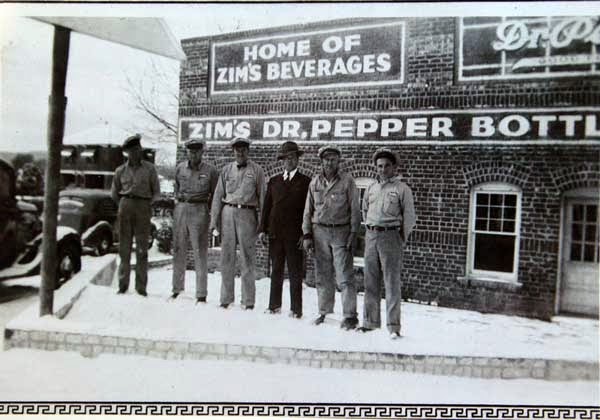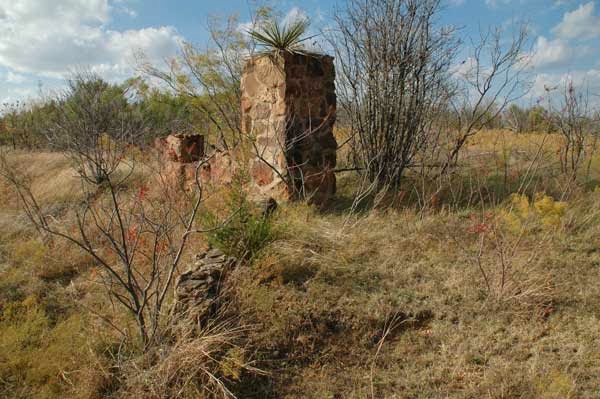Brutal Winsett Springs Murder
Chills History of Tranquil Place
By Jeff Clark
Travis
Winsett has gone missing.
The
backroads of Eastland
County
It isn’t
like him to take off like this.
Winsett Springs is located just east of Ranger on Hwy 571.
Horse drawn wagons stopped here, the spring’s pipe ending so close to
the trail one could almost catch water in cups, never leaving their buckboard
seat.
Winsett water was cold and pure.
Fill your containers. Let your horses drink. John
“Milton” Winsett came to Ranger in 1900, planning to continue to Arizona . He ran into Sam
Philipps in Ranger, who offered him a job and a room at his Colony Creek spread.
Milton later
married Philipps’ daughter Lucy, having two kids Veda and Travis during the
marriage.
Winsett Springs
helped save Ranger during the 1912 typhoid epidemic and the 1917 oil boom. Stagnant
cisterns invited typhoid – treated by lots of water and not eating. Men made livings
hauling water from Winsett Springs in wood barrels by mule-drawn wagons during
the oil boom. It sold for $1 a barrel.
Some thought Texas Rangers might
have used the springs as a camp. Caddo and Comanche may have called this place
home.
Ranger’s 1935 Cooper School Alameda
schoolmates visited during their 1940 senior trip.
Activity
at Winsett Springs had tapered off by 1970, however.
Travis
Winsett has always been an enigma to locals. He’s described differently,
depending on who you ask. Published accounts say he was well-respected. Anecdotal
words paint the picture of a loner, a nice man who tipped his hat to school
kids driving his mom to town.
Travis was arrested by the FBI for
draft evasion during WWII. Some said he traveled with pacifists, giving
speeches downtown on a portable loud speaker. Strange, as Travis might’ve been
exempt from the draft being a farmer. His best friend was a WWII airplane
gunner.
“His distance came about because he
kept to himself,” niece Lucie Olson told me. “He didn’t want to cause any
trouble or bother anybody. He was a very quiet, introspective artist/engineer
type. Not anti-social at all, but he didn’t go out looking for things to do
either. He had plenty with the gardening, farming and animal tending he did on
a daily basis.”
By 1970, his parents had passed
away. Townspeople noted the bachelor rarely spent money. Perhaps, some thought,
it was hoarded up in that old Winsett house somewhere.
“To me he was a kind, gentle
person,” Lucie remembered. “He took flies outside, without killing them. The
only thing I ever saw him kill was rattlesnakes. It would have been much easier
for him to go along with the draft, but killing violated everything he was
about.”
Travis had a mechanical mind, once
building a device to scare deer away tailored from a windmill and disk hammer. “Eccentric,
but smart,” neighbors said. A nice man.
“Travis meant no harm to anyone. He
was not un-American. He was a pacifist and if he had been a Quaker or Seventh
Day Adventist, he would have been left alone,” Lucie said. “My grandmother had
a stroke in 1968, and Travis and my mother cared for her at home until the very
last. His patience and care was amazing to me.”
Lucie’s mom Veda, Mrs. Hubert Capps
always thought of Travis as “her other child”, a touchstone connection that
continued into adulthood. She was 11 years his elder. She had written him two
letters that June, receiving no answer back. That wasn’t like Travis.
Mrs. Capps
arrived at the frame Winsett Springs farm house Saturday, June 27, 1970 to see what was up
with her brother.
The front door was unlocked. His
car was in the garage but he was nowhere around. She found the letter she’d
written him the previous Sunday, still inside his mailbox.
The locals hadn’t missed him, until
his sister raised the alarm.
The police were called. Sheriff Lefty
Sublett, Ranger Police Chief J.W. Vinson, Deputy Sheriff Loy Williams, Ranger
Constable Ralph Veal, Eastland Constable Bill Hunter, Game Warden Kenneth
Payne, Ranger Justice of the Peace M.D. Underwood, Eastland Justice of the
Peace L.W. Dalton and later District Attorney Emory Walton converged on the
house.
Walking
inside, they sensed something wasn’t right. Moving Travis’ recliner chair near
the front wall aside, they found dried blood on the hardwood floor. A small
round hole was found in the front screen door. A rifle cartridge was located on
the ground outside the front fence, below the left gate post some 50 feet away.
Mrs. Capps noticed a “Long Tom” shotgun
absent from Travis’ bedroom. His arrowhead collection, valuable coins, and
other items were also gone.
What the group didn’t find was
Travis Winsett.
Dozens of
officers and volunteers spread out across the Winsett Farm. More hopped in
their cars and pickups, searching high and low around the area. Neighbors said
they hadn’t seen Travis since the previous Monday evening, right before supper
time.
Buzzy
Rutledge was a high school senior in 1970. That previous Monday, he and his
girlfriend noticed a house burning south of town at the Hathcock Farm. He drove
to Ranger, hopped in a volunteer fire department truck and rushed to put out
the blaze. There was no gas or electricity connected at the homeplace, making
the fire’s cause a mystery. The house was totaled, its debris fallen all the
way to its foundation.
After the Winsett manhunt got under
way, that Monday’s mystery fire hit radar screens quickly. When searchers
returned to the Hathcock Farm, they were greeted by a horrible smell. An old
cistern under the back porch was covered by fallen debris. Flashlights shined
down the dark cistern. Floating face up in the black water 22 feet below was
the bloated corpse of Travis Winsett.
The search for Milton and Lucy’s only
son was called off.
A killer was on the loose.
The fire department arrived, the body
hoisted to the surface. One shot to the temple was visible. Justice of the
Peace Underwood pronounced Travis dead, his body taken to Ranger’s funeral home.
The cistern was searched with a magnet for a weapon and later drained. No clues
were found.
Constable
Veal said, “I can think of a half dozen fellows around here we should talk with
to find out where they were last Monday night.” One of the people interviewed
remembered seeing someone in town with a new box of old arrowheads.
James Henry Bishop was a collector
of old artifacts and antiques. Prior to Travis’ body being found, 32-year-old
Bishop was investigated for burglary by Palo Pinto County Deputy Bill Harris.
The deputy interviewed Bishop about a home burglary in the town of Palo Pinto . He remembered
seeing a rifle in Bishop’s home, but it wasn’t connected with the crime he had
been investigating.
Bishop was still in the Palo Pinto
County Jail concerning that burglary. Eastland County Abilene ’s Hendricks Hospital
The suspect
appeared before a Palo Pinto County Justice of the Pace and was advised of his
rights. Sheriff Sublett and District Attorney Walton then started asking
questions.
The rifle Harris
had seen was bought at Weatherford’s First Monday Trade Days, Bishop told them.
He couldn’t remember the seller’s name. Travis Winsett’s murder was news to
him, Bishop maintained. The Long Tom, a .22 rifle, arrowheads, several silver
half dollars, and other items of interest were found in Bishop’s home. A spent
.22 cartridge similar to that found outside Winsett’s gate was found in
Bishop’s vehicle.
Sublett and
Walton questioned Bishop a second time. His story didn’t waiver, other than
admitting being near the Winsett place, finding one of the stolen items in a
ditch. He acted like he wanted to help, lawmen said.
The
Hendricks autopsy found that a single shot had entered Travis WInsett’s right
temple and remained in his skull. The slug was virtually destroyed. Local ballistics
tests wouldn’t be able to tell if the bullet had been shot from the rifle taken
from Bishop. Travis’ sister identified some of the items taken from Bishop as
being her brother’s.
Texas
Ranger H.R. Block took possession of the spent slug. It joined the seized .22 rifle,
two cartridges and dust samples from the Winsett and Bishop homes at the Dept.
of Public Safety lab in Austin .
Two days
later on July 8, James Henry Bishop was charged with Travis Winsett’s murder. Bail
was denied. Bishop was moved to the Eastland County Jail.
The Austin lab later
concluded that the two cartridges were fired from the gun taken from Bishop’s
house. An Eastland
County July
20, 1970 . Bail was set at $10,000 by District Judge Earl Conner,
though Bishop remained incarcerated. Trial began in 91st District
Court, with 12 witnesses called.
The defendant admitted he’d shot
Winsett, but that it was an accident. A “little voice told him to do it,”
reports said he testified. He said he was hunting near the Winsett home that
evening. He had pursued a rabbit near the Winsett barn, but didn’t want to
shoot that close to the house. Bishop is said to have testified that he didn’t
see Travis in the house, but aimed at a window and pulled the trigger in a
“childish gesture”.
Bishop took off, he said, thinking
Travis might come after him. When no one did, he returned to the Winsett place,
he said. He found Travis in his chair, like he’d fallen asleep. It became clear
to Bishop what had happened, he said. Travis Winsett was dead.
Bishop panicked, he said, placing the
body inside a blanket, hiding it in a closet. He stole several things to make
it look like a burglary, he said. Bishop testified that he came back later, taking
the body to the abandoned Hathcock farmhouse. Travis being placed in the
cistern was an accident, he said, but he admitted setting the fire.
The jury
found Bishop guilty, assessing a 55 year prison term.
Prosecutors
had not asked for the death penalty.
Travis
Winsett is buried on a quiet slope beside his parents and grandparents at the Merriman Cemetery
Many actors in this tragedy have
passed away. I still don’t feel like I know Travis Winsett. I didn’t catch a
sense of the man, walking around his family’s old farmhouse. Maybe I felt a
little of his sadness near the cistern out south of town. I’m not sure what his
legacy is, beyond that of victim. Beyond that of a life not fully realized. But
that too, doesn’t feel quite correct.
Tranquil Winsett Springs continues
to run, cold and pure.
.
Special
thanks to Will Barrett, Kenneth & Salata Brown, Dorothy Elrod, Ken Falls October 1, 1970 .



.jpg)











